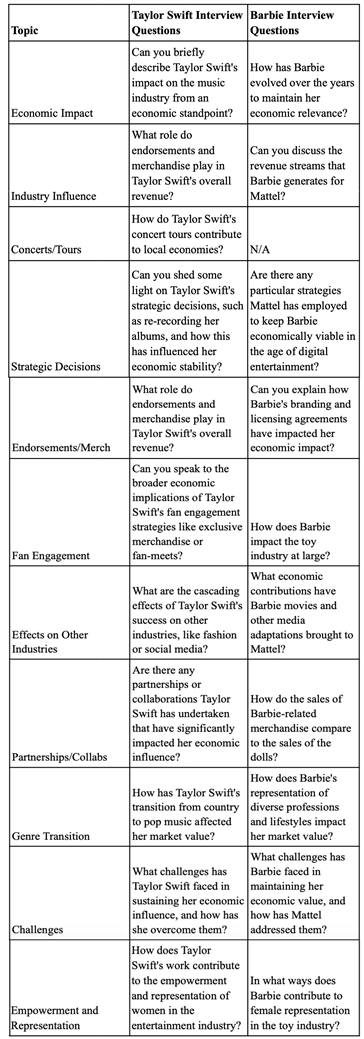Economic Impact of Women in Entertainment: A Case Study on Taylor Swift and Barbie ()
1. Introduction
The entertainment industry is a thriving global sector that encompasses music, film, television, and various other forms of media. It holds immense economic significance and is characterized by its constantly changing trends, continuous innovation, and influential figures who shape the cultural landscape. Unfortunately, women’s contributions in this field often go unappreciated and lack representation. Throughout history, women have played a significant role in the entertainment industry but faced numerous gender disparities like unequal pay and limited opportunities. Despite these obstacles, however, resilient female talents have emerged as powerful forces challenging societal norms and stereotypes within this realm. Particularly notable for their remarkable advancements in directing, producing or performing, they shattered barriers previously set against them.
2. Purpose of Research
2.1. Importance of Research
In an age where achieving gender equality holds great significance, it is imperative to grasp the economic impact that women hold within the entertainment sector. This comprehension not only sheds light on how the industry has transformed over time but also fuels conversations regarding female empowerment at a larger level. The objective of this study is to uncover and express the financial consequences arising from women’s participation in entertainment, providing valuable insights capable of influencing policies, investments, and efforts towards support.
2.2. Research Question
The objective of this study is to investigate the economic importance of Taylor Swift and Barbie in the entertainment sector. It endeavors to address a fundamental inquiry regarding how women, both as artists and symbols, play a role in shaping the financial landscape within this industry. By analyzing their influence, market attractiveness, and fiscal impact, we aim to gain an all-encompassing comprehension of how female participation in entertainment evolves and its wider implications on the economy.
3. Literature Review: Women in the Industry
According to recent statistics, gender disparities persist in the entertainment industry. Recent data from The Center for the Study of Women in Television and Film shows that women account for only a dismal 16% of directors, writers, producers, executive producers, editors, and cinematographers involved in the top-grossing films within the United States (Saxon, 2023) . This unequal distribution not only restricts their creative impact but also adversely affects women’s financial opportunities within this field.
Historical Context
To understand women in the entertainment industry, their historical context is crucial. Gender stereotypes have historically hindered women’s creative and financial success in the entertainment business. The “Hays Code” and other early 20th-century statutes set strict moral standards for filming women (Beck, 2020) . Many movies had damsels in peril and lacked depth in their portrayals of women. Hollywood did not challenge these ideals with strong stories like Thelma & Louise or Norma Rae until feminist movements in the 1960s and 1970s.
Female artists were often exploited and had little creative freedom in the music industry. Influential people like Tina Turner and Aretha Franklin overcame obstacles to achieve artistic and financial independence. Feminism’s development in the 1970s and 1980s boosted representation and compensation (Beck, 2020) . Gender dynamics in the entertainment industry reveal that female artists and professionals struggle to navigate a complex environment shaped by their predecessors’ successes and failures. This shows how past constraints still affect the sector.
4. Economic Contributions of Women in Entertainment
4.1. General Impact
In the entertainment industry, women have overcome historical gender biases and made significant economic contributions that challenge stereotypes and reshape the dynamics of the industry. Their influence can be seen across various sectors, profoundly impacting its financial landscape. Films led by women, such as “Wonder Woman” and “Frozen,” have defied traditional expectations by achieving remarkable success at the box office (Beck, 2020) . These movies debunked the belief that only male-led productions guarantee profitability, highlighting how female-fronted projects are financially viable and can attract diverse audiences. Women artists like Taylor Swift, Beyoncé, and Adele consistently dominate global music charts with their albums’ sales figures skyrocketing. They leave an indelible mark on revenue generation through tours they undertake worldwide and merchandise sales, further showcasing their immense financial clout in challenging existing norms within this business sector while proving lucrative forces themselves. Streaming platforms nail value proposition for content creation via talent from females—Netflix original series exemplified here are top-rated amongst viewers, e.g., “The Crown” or “Stranger Things” (Alcazar et al., 2023) . Such exhibits garner critical acclaim not merely because they are excellent but due partly thanks also to being driven narratives authored predominantly outperformed counterparts written primarily featuring males—streaming services finally realized tapping into profitability tied up producing more well-liked shows reflecting audience demographics diversification efforts yielding significant results. Female celebrities contribute significantly beyond just entertaining people in fashion and endorsements globally. Rihanna has skillfully constructed a flourishing empire that exemplifies personal and institutional advancement possibilities. She has demonstrated her adeptness at expanding her brand portfolio by securing lucrative endorsements. Her brand transcends beyond music to encompass various industries, solidifying her position as a frontrunner in many spheres of success. Following suit are notable figures like Oprah Winfrey and Reese Witherspoon, who have made substantial contributions within the media industry by establishing production companies yielding considerable revenue. Moreover, these ventures prominently highlight female-centric stories, fostering an environment of inclusivity and diversity within their respective fields.
4.2. Successful Examples
Taylor Swift’s impact goes beyond her music career. Her skillful management of intellectual property rights, such as re-recording her music catalog, showcases her business acumen. In 2018, her “Eras Stadium World Tour” broke records by becoming the highest-grossing U.S. tour, regardless of gender (Théberge, 2021) . Barbie: Barbie has transformed into a global brand since its introduction in 1959 and is an enduring symbol of female empowerment. Through merchandise sales, movies, and collaborations, Barbie has generated billions in revenue—highlighting the immense economic potential found within female-focused franchises in entertainment.
Oprah’s influence surpasses that of just hosting a renowned talk show. Harpo Productions and OWN network have proven to be immensely profitable ventures contributing significantly to Oprah’s net worth over time—a testament to her entrepreneurial skills leveraging media platforms effectively towards tremendous financial and philanthropic success. Reese Witherspoon: Reese Witherspoon’s production company Hello Sunshine is responsible for developing highly acclaimed series like “Big Little Lies” and “Little Fires Everywhere.” (Brannon Donoghue, 2023) . Championing narratives centered around women-driven stories through projects like these not only advances gender equality but also proves fruitful, with remarkable profitability achieved alongside the mission.
4.3. Taylor Swift: An Overview
Taylor Swift has achieved numerous milestones throughout her career, highlighting her immense influence in the entertainment industry. She first captivated audiences with the release of her self-titled debut album in 2006, swiftly establishing herself as a rising star within the country-pop genre. Transitioning to pop music with successful albums like “Red” (2012) and “1989” (2014), Taylor’s fan base expanded exponentially while earning widespread acclaim on a global scale (Majic, 2023) . In fact, “1989” secured Taylor an enviable Grammy Award for Album of the Year. In terms of commercial success, Swift’s album “Fearless” (2008) solidified itself as 2009’s top-selling record in America—affirming her prowess as one of the music industry’s powerhouses. However, it was not just musical capabilities that propelled Taylor to such heights; she also demonstrated remarkable business acumen by strategically re-recording early works to regain control over them—thus bolstering artistic integrity and financial stability. Taylor consistently shatters records during concert tours—most notably evident through achieving the highest-grossing U.S. tour status for “Eras Stadium World Tour” in 2023 that is still ongoing. Homage to her albums, the Eras Tour is her most expansive tour yet, with 146 dates across five continents. These accomplishments contribute significantly towards augmentations made economically impact-wise.
4.4. Barbie: An Overview
The iconic Barbie, created by Mattel in 1959, has transformed into a cultural phenomenon with a fascinating history. Introduced initially as a fashion doll, she signified independence and dreams for young girls. Throughout the years, Barbie’s reach expanded significantly as she began representing diverse professions and lifestyles—from astronauts to presidents—while celebrating inclusivity through her inclusion of various ethnicities and body types (Majic, 2023) . Barbie surpassed her initial role as just another doll, gracefully stepping onto the big and small screens to solidify her position within popular culture. Not only did this increase her profound influence, but it also allowed opportunities for extensive merchandise sales ranging from clothing items to captivating toys-bolstering revenue streams cemented Barbie’s coveted status within the toy industry.
5. Methodology
1) Rationale
For this research, the case study approach was selected to conduct a comprehensive and all-encompassing examination of how women in entertainment impact the economy. Specifically, Taylor Swift and Barbie were chosen as critical cases to investigate. This methodology enables us to immerse ourselves deeply into their careers and contributions, thus providing significant insights into our research inquiry. By scrutinizing their career achievements, economic sway, and cultural importance, we can draw substantial conclusions regarding women’s pivotal role in the entertainment business and analyze their financial implications.
2) Limitations
While the case study approach allows for in-depth observations, it has limitations. Firstly, due to the distinctive and extraordinary nature of Taylor Swift and Barbie’s careers, the findings may only partially apply to some women in entertainment. Secondly, relying on publicly available data can introduce biases or omissions in the research. Moreover, accurately quantifying the economic impact of these individuals proves tricky as it goes beyond financial aspects and extends into cultural and societal spheres. Finally, this methodology might need to capture experiences and contributions from lesser-known women within the industry. Notwithstanding these drawbacks, the chosen method offers a valuable perspective for examining how female participation contributes economically in entertainment circles.
5.1. Data Collection
Financial Reports
This research relies heavily on financial reports as a crucial data source. To delve into Taylor Swift’s impact on the entertainment industry, we will thoroughly assess her financial statements, encompassing earnings from music sales (Annex 1-1), concert tours (Annex 1-2), endorsements, and merchandise sales (Annex 1-3). We can gain valuable insights into her economic influence by analyzing these quantitative records. Similarly, for Barbie’s case study, our examination will center around Mattel’s financial reports specifically pertaining to Barbie-related sales figures evident in Annex 2-1, merchandise and movie income streams as seen in Annex 2-2 (Mattel - Financial Information, 2022) , and revenue generated through licensing agreements as seen in Annex 2-3. These comprehensive documents enable us to scrutinize and compare the substantial contributions made by both Taylor Swift and Barbie towards their respective industries with utmost precision.
5.2. Interviews
In addition to analyzing financial reports, we will also conduct interviews to collect qualitative data. These interviews will involve engaging with industry experts, executives, and individuals closely connected to the careers of Taylor Swift and Barbie. By gathering insights through these discussions, we aim to obtain valuable contextual information about their influence in both industries. These interviews are crucial for gaining perspectives on various aspects, such as industry dynamics and the economic significance attributed to these iconic figures. However, potential biases within responses must be taken into account when interpreting findings (Annex 3). To ensure a comprehensive analysis incorporating diverse viewpoints, careful consideration will be given during the selection process of interviewees. By combining financial reports with our interview findings—incorporating quantitative and qualitative sources—we can create a well-rounded understanding of how women impact entertainment economically. Explicitly focusing on Taylor Swift and Barbie adds depth and comprehensiveness to this research endeavor.
6. Global Economic Impact of Barbie and Taylor Swift
6.1. Discussion: Comparative Analysis
1) Similarities
Taylor Swift and Barbie possess numerous parallels in their influence on the entertainment industry’s economic landscape. Both have attained legendary status, surpassing boundaries within their respective domains. Taylor Swift has established herself as an indispensable figure in music. At the same time, Barbie has cemented her position as a fashion doll icon, making both enduring cultural symbols with widespread appeal. Moreover, they have diversified their income streams by venturing into other spheres. Taylor Swift through acting roles and endorsements, whereas Barbie expanded beyond dolls alone by delving into movies and merchandise collaborations. These diversifications exhibit adaptability and business acumen, which significantly contributes towards accomplishing long-lasting prosperity for both individuals/and entities alike.
2) Differences
Despite sharing similarities, Taylor Swift and Barbie also display noticeable distinctions in their economic impacts. Most of Taylor Swift’s income is derived from her music endeavors, including substantial earnings from album sales, tours, and endorsements. Conversely, the revenue generated by Barbie primarily originates from doll sales and associated merchandise. Moreover, while Taylor Swift’s career exclusively revolves around her artistic abilities, Barbie embodies a brand that encompasses fashion trends, lifestyle choices, and cultural influence. It is worth mentioning that Barbie has sustained remarkable economic success for over six decades, whereas although it is impressive, Taylor Switft’s career trajectory spans a relatively shorter period.
6.2. Wider Implications
1) For the Entertainment Industry
The entertainment industry can derive significant economic benefits from both Taylor Swift and Barbie. Their accomplishments not only question conventional gender stereotypes but also emphasize the profitability of offering diverse representation (Bickford, 2020) . By showcasing their ability to dominate in music and maintain cultural significance, Taylor Swift and Barbie demonstrate that there is a considerable market for content and products driven by women. This indicates an opportunity for the industry to prioritize diversity, empowering female creators and influencers.
2) For Women’s Economic Empowerment
Barbie and Taylor Swift represent women’s economic emancipation in entertainment. Taylor Swift’s financial success shows that women can succeed in male-dominated industries while battling for their creative rights. However, Barbie’s legacy as an iconic image and wealthy brand shows how women may succeed economically. These incredible stories motivate women from all areas to pursue careers in entertainment or whatever industry they like, breaking prejudices and fighting for equal opportunity.
6.3. Challenges and Criticisms
Despite Taylor Swift’s undeniable economic success, it does not come without its fair share of challenges and criticisms. Some individuals argue that privilege and connections within the industry aided her initial breakthrough into stardom. Furthermore, debates concerning artist compensation in the digital age have been ignited due to her conflicts with record labels and streaming platforms. Critics also raise concerns about celebrity endorsements, questioning their authenticity and influence on consumer behavior (Kabanda, 2019) . Throughout the years, Barbie herself has confronted numerous criticisms. Specific individuals have asserted that her unachievable physical proportions only uphold damaging beauty ideals; however, attempts have been made to broaden her appearance and provide more diversity. Moreover, apprehensions about consumerism and materialism associated with Barbie have arisen. Detractors also argue that her cultural influence might be responsible for reinforcing gender stereotypes despite efforts towards showcasing a broader range of professions and roles she embodies.
7. Conclusion
In conclusion, this research highlights the significant economic contributions made by women in the entertainment industry through examples like Taylor Swift and Barbie must be acknowledged in today’s world. Both individuals have demonstrated their financial prowess within their respective fields, with Taylor Swift’s success spanning various revenue streams, including music sales, tours, merchandising, and more. Similarly, Barbie has established herself as a cultural icon, generating substantial sales revenues through movies and merchandise diversification partnerships. While both defy gender norms and expand their influence in similar ways to exemplify empowerment in entertainment industries, they also showcase differences in career paths and sources of income. This further emphasizes that women are crucial players shaping the economic landscape of this sector. Future studies on empowering women across different areas of the industry should delve deeper into exploring strategies to achieve such goals effectively.
Annex 1
1) Taylor swift
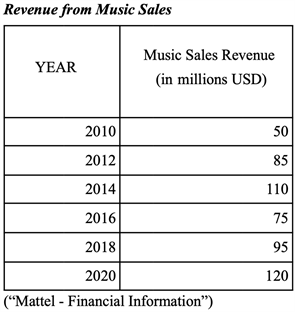
2) Tour earnings
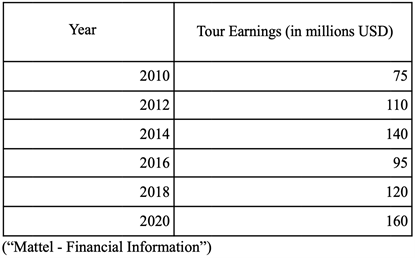
3) Merchandising
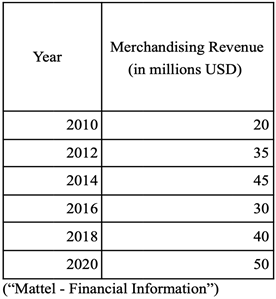
Annex 2
1) Sales revenue
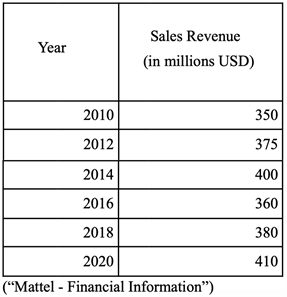
2) Movies and merchandise

3) Licensing and collaborations
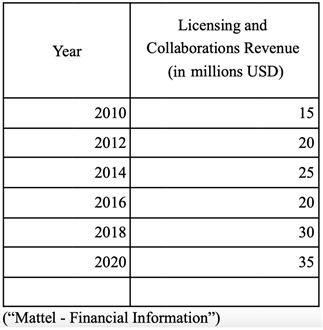
Annex 3
